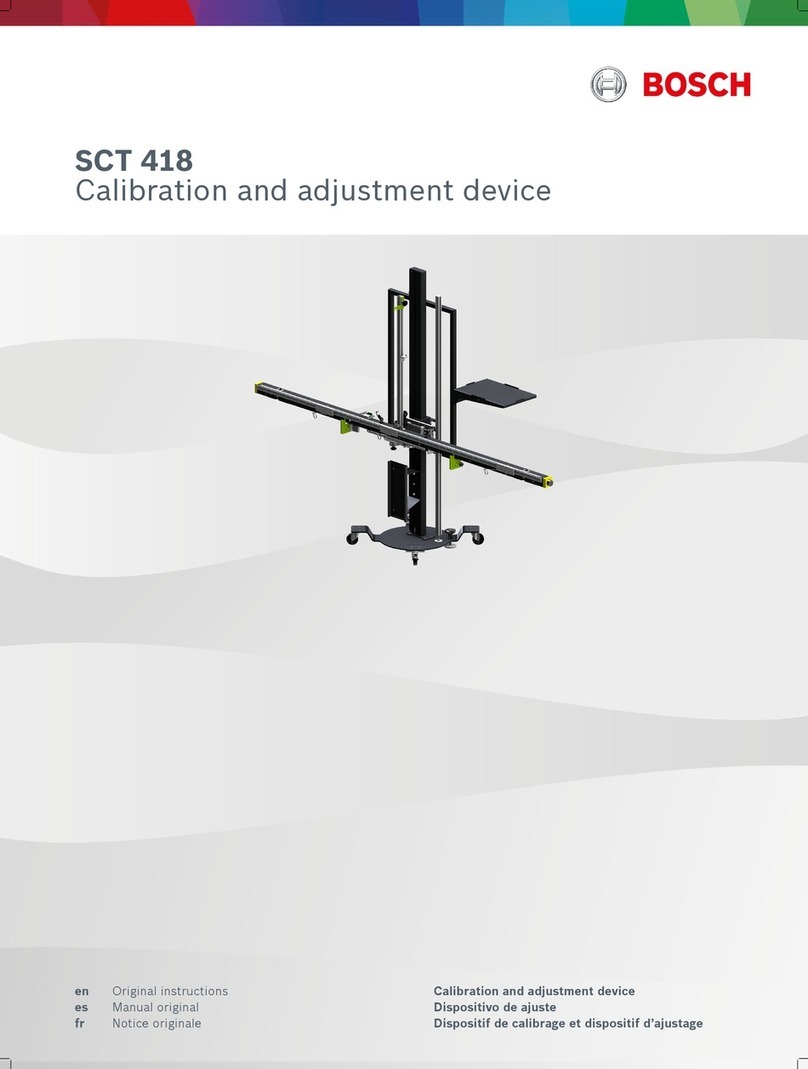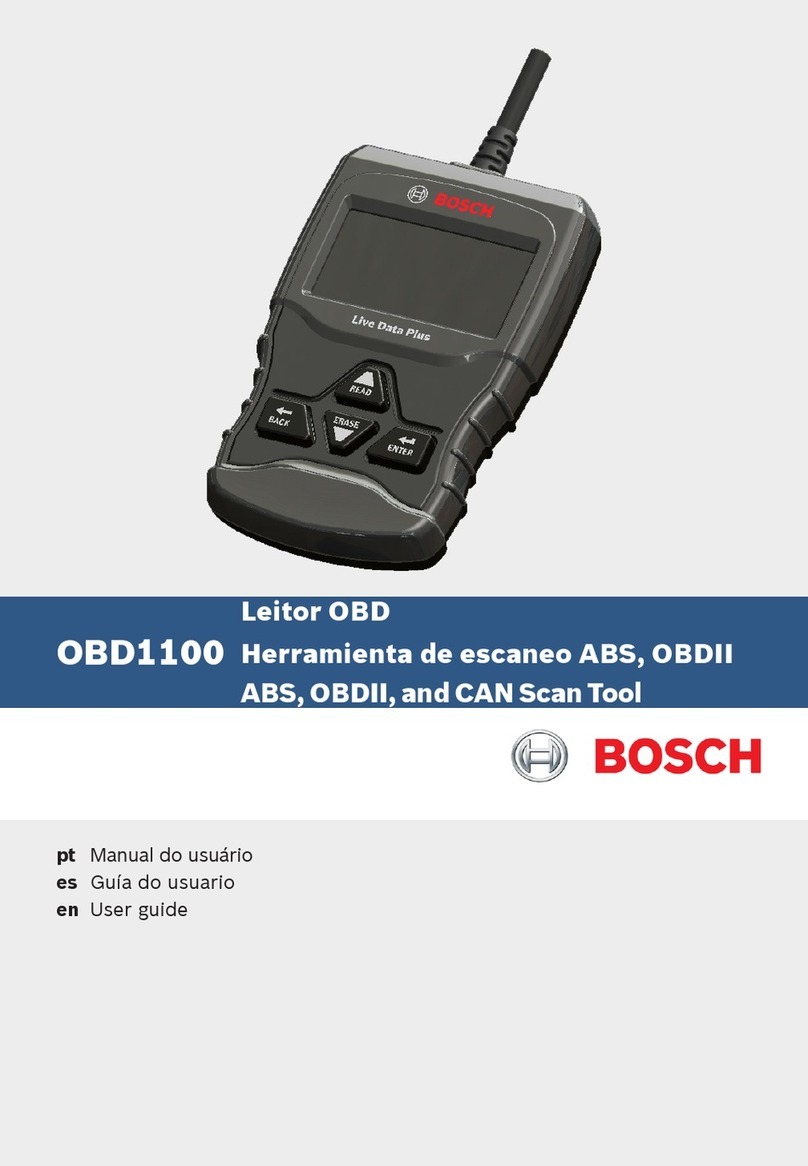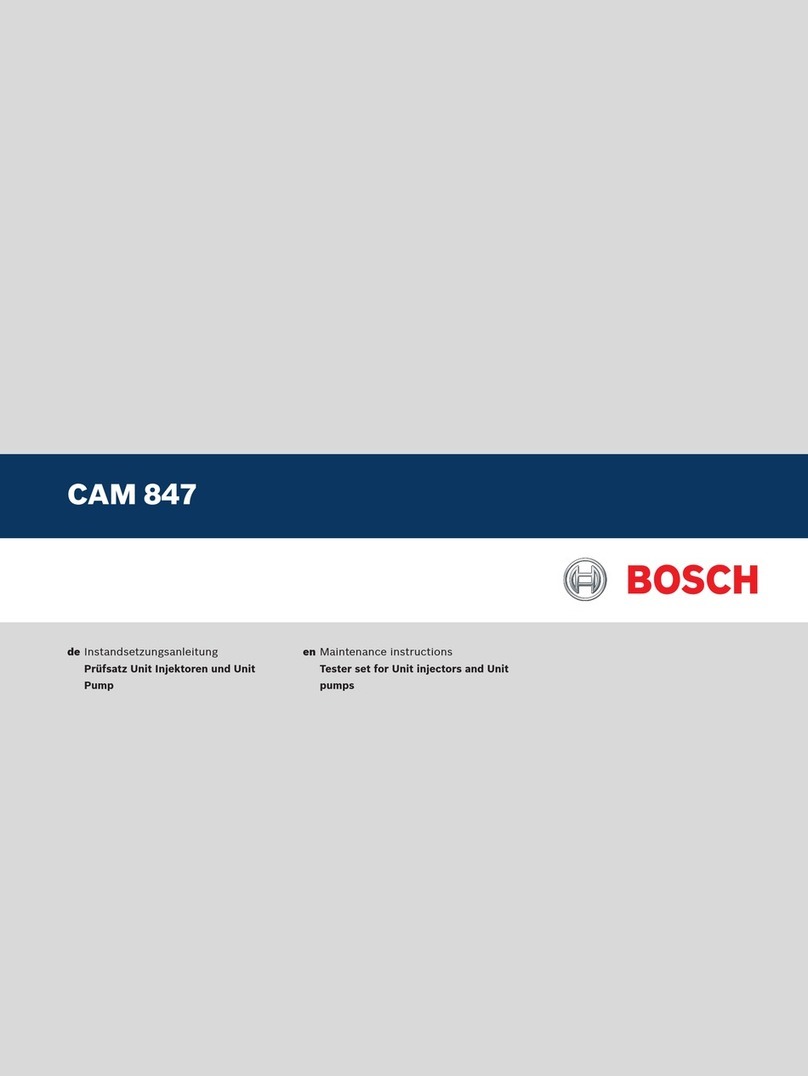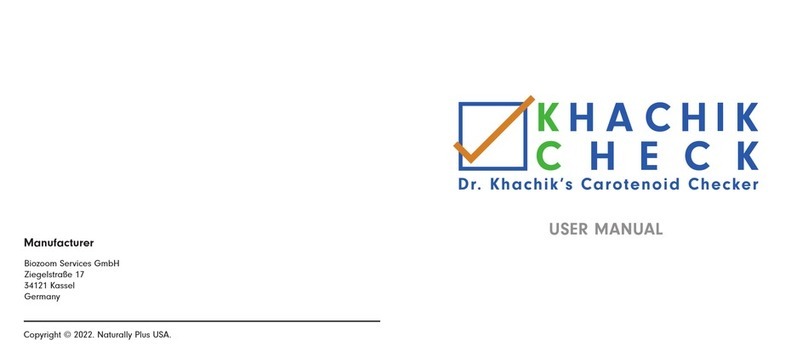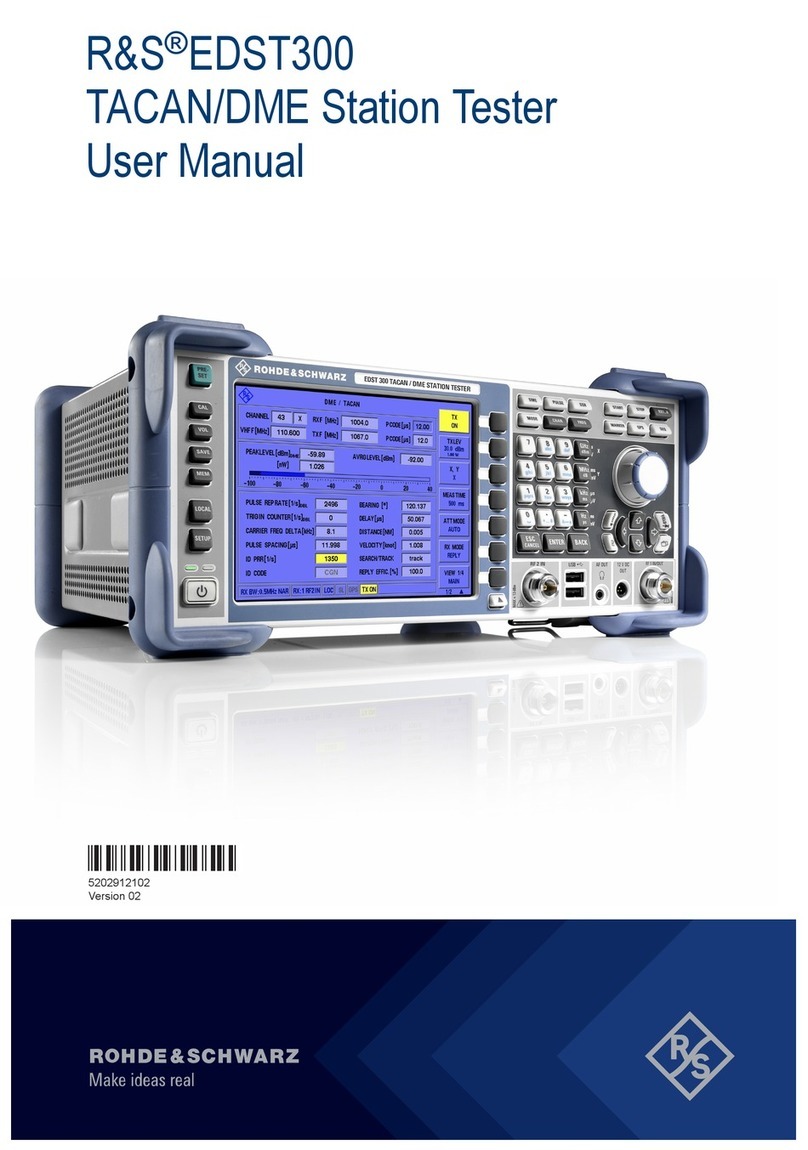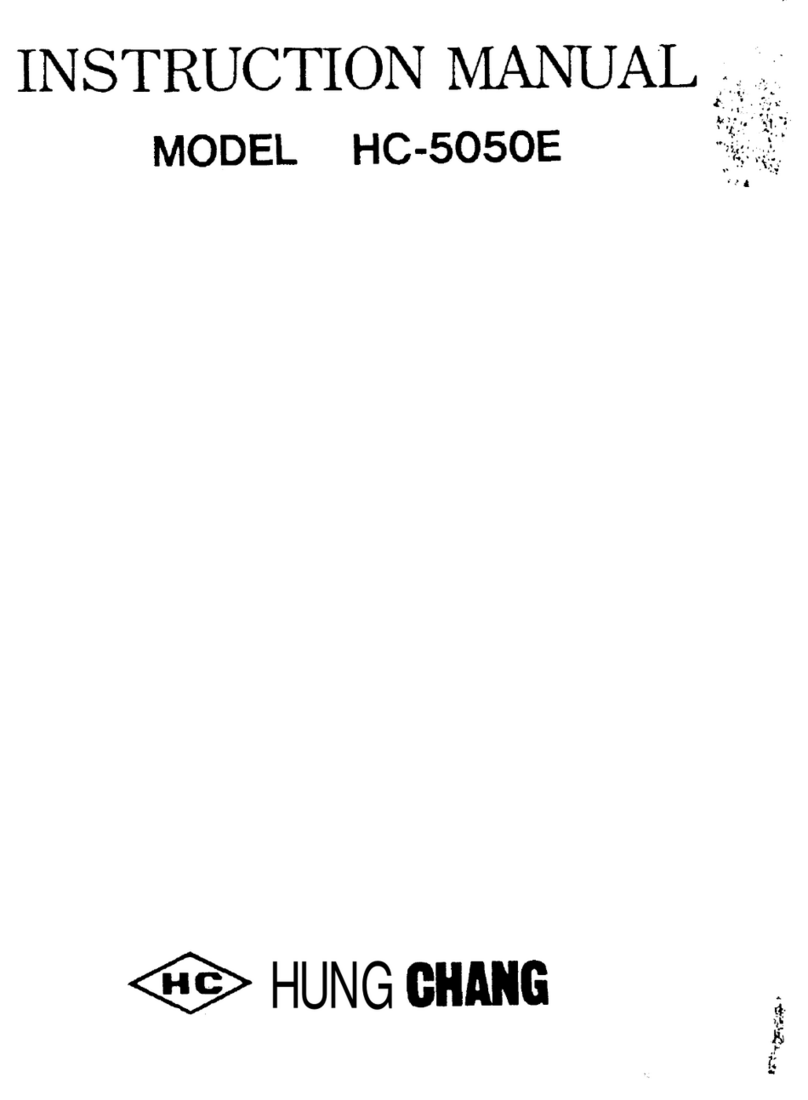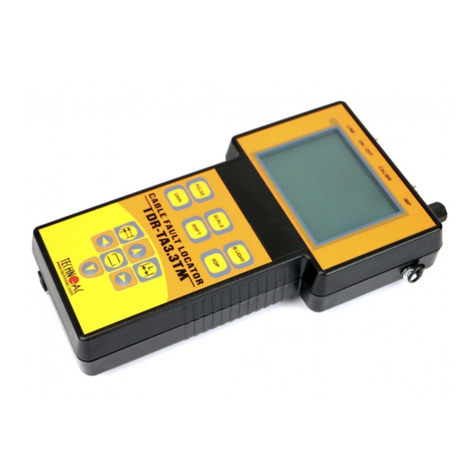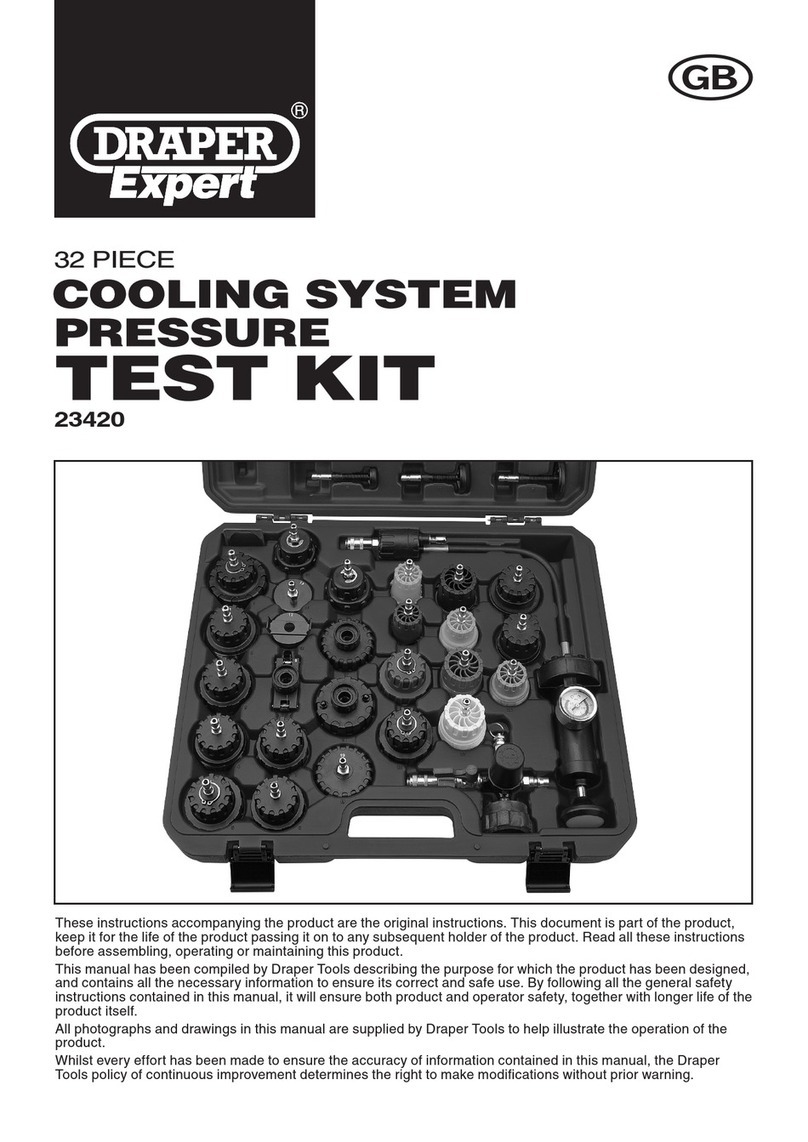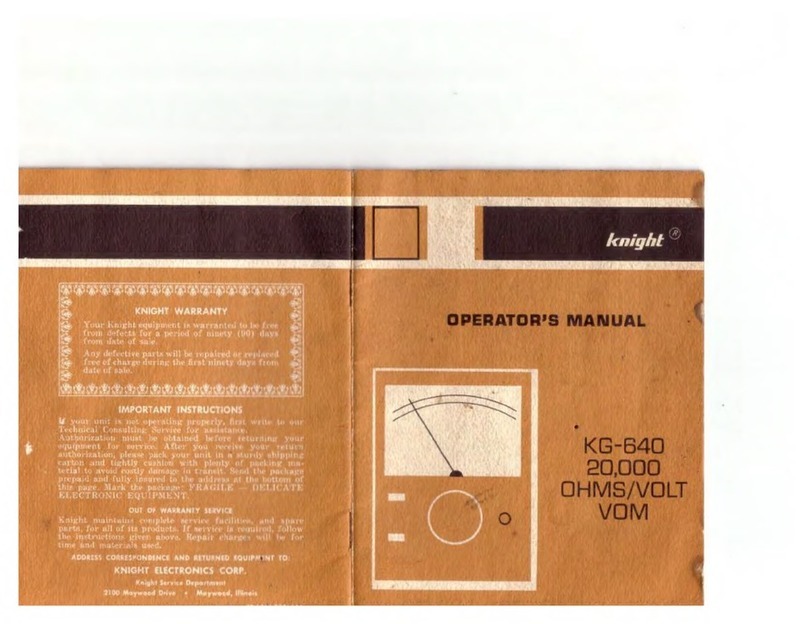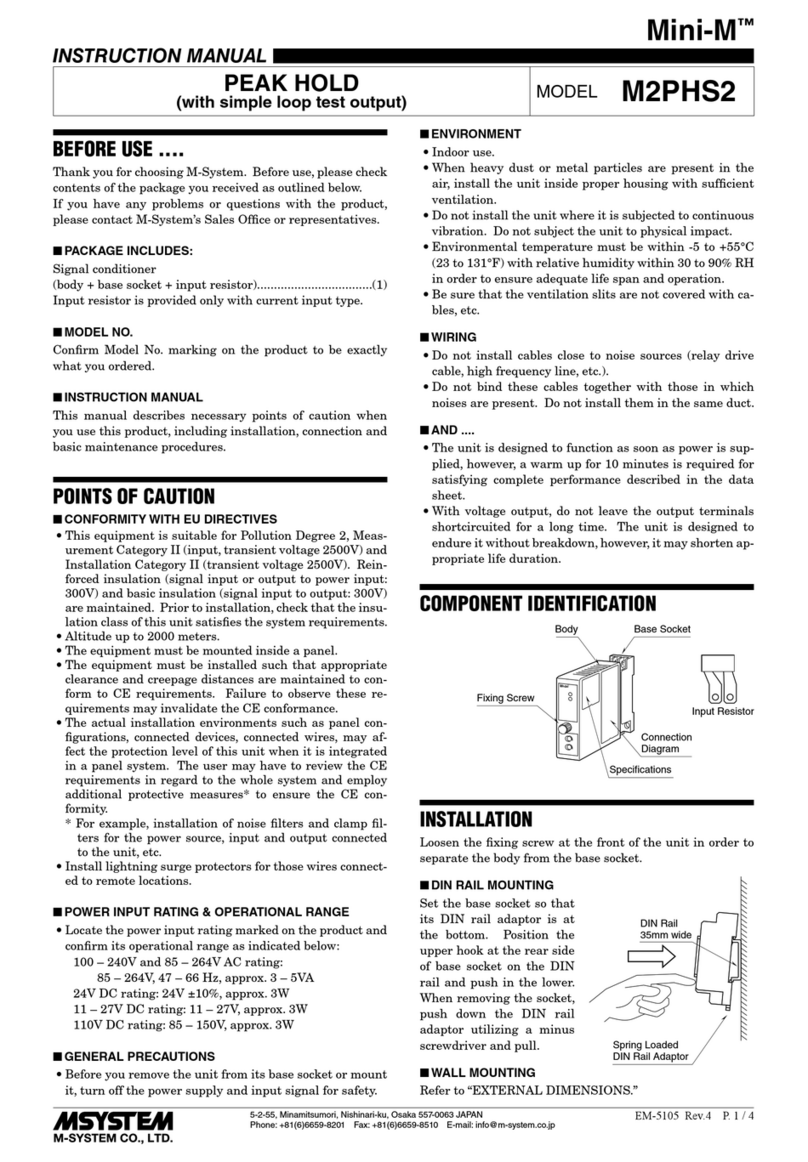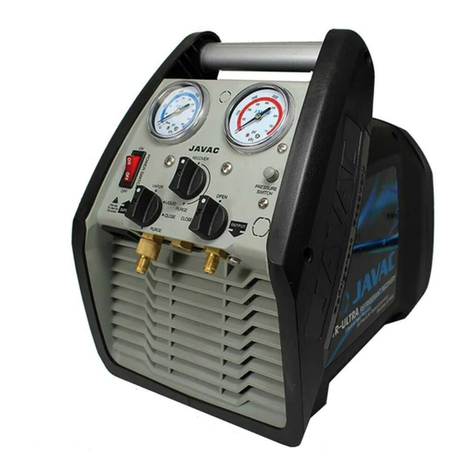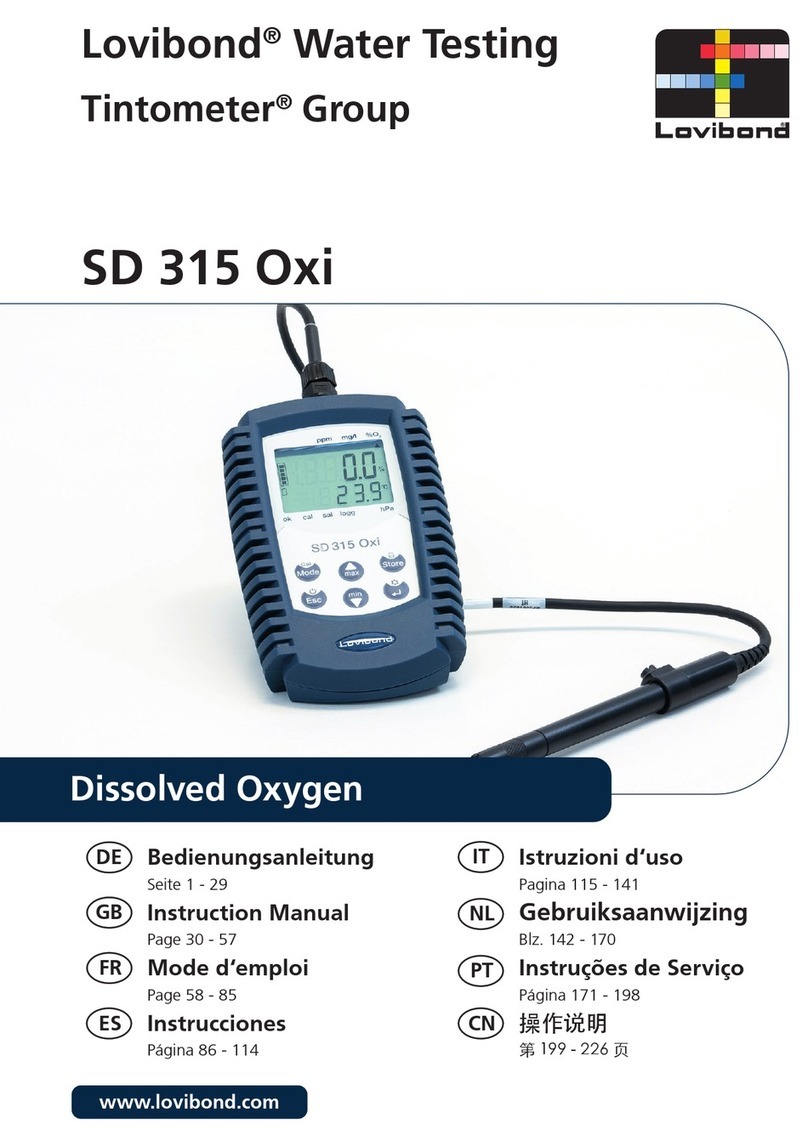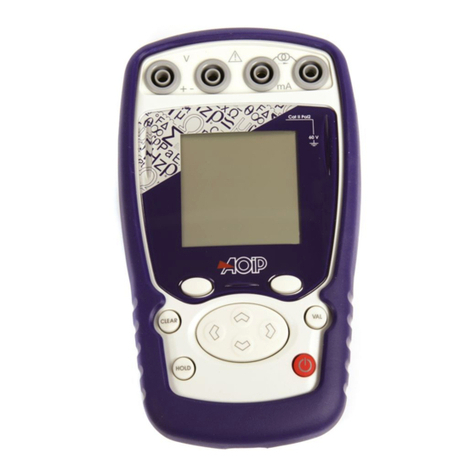Bosch EPS 610 User manual

EPS 610
en
Original instructions
Injection pump test bench


F 002 DG9 918 2017-10-16|Bosch Limited
| EPS 610 | 3 en
Contents English
1. Symbols used 4
1.1 In the documentation 4
1.1.1 Warning notices -
Structure and meaning 4
1.1.2 Symbols in this documentation 4
1.2 On the product 4
2. User information 5
2.1 Important notes 5
2.2 Safety instructions 5
3. Product description 6
3.1 Application 6
3.2 Requirements 6
3.3 Delivery specification 6
3.4 Special accessories 6
3.5 Description of unit 7
3.5.1 EPS 610 7
3.5.2 Drive 8
3.5.3 Front panel 8
3.5.4 Frame 8
3.5.5 Measuring glass carrier 8
3.5.6 Control cabinet 10
3.5.7 Human Machine Interface (HMI) 10
3.5.8 Test oil supply unit 11
3.5.9 Pressure control valve for high and
low pressure 11
3.6 Test oil tank 11
3.6.1 Cooling the test oil 11
3.6.2 Heating the test oil 12
3.7 Temperature measurement and control 12
3.8 Temperature control for VE pumps 12
3.9 Power supply for start / stop valve
(12/24 V for distributor pumps) 12
4. Initial start-up 13
4.1 Transportation 13
4.2 Unpacking the EPS 610 13
4.3 Moving the EPS 610 to the installation
location 13
4.4 Before turning on for the first time 14
4.4.1 Installation 14
4.4.2 Mains connections 15
4.4.3 HMI connection 15
4.4.4 Test oil connections 16
4.4.5 Connection for cooling water 17
4.4.6 Checking pressure gauges 17
5. Program description 17
5.1 Description of keys on the HMI 17
5.2 Operation of the HMI 18
5.3 Changing the set values 18
5.3.1 Setting the motor speed 18
5.3.2 Change direction of rotation 19
5.3.3 Set number of strokes 19
5.3.4 Oil temperature control 19
5.4 Automatic selection of stroke count
and motor speed 19
5.4.1 Selecting a preset stroke count 19
5.4.2 Selecting a preset motor speed 19
5.5 Saving customer-specific speed rates 20
5.6 Activate stroke counting 20
6. Operation 20
6.1 Switch-on 20
6.2 Switch-off 21
6.3 Emergency stop 21
6.3.1 Activating emergency stop 21
6.3.2 Deactivating emergency stop 21
6.4 Preparing to carry out tests 21
6.5 Checking pre-stroke, start of delivery and
cam offset for in-line pumps 22
6.6 Checking start of delivery for distributor
pumps with pre-stroke specifications 23
7. Troubleshooting 23
7.1 System error messages 24
7.2 Drive error messages 25
8. Maintenance 26
8.1 Cleaning 26
8.2 Spare and wearing parts 26
8.3 Servicing 26
8.3.1 Maintenance intervals 26
8.3.2 Removing contaminated test oil 27
8.3.3 Cleaning the MGT strainer 27
8.3.4 Replacing the filter insert 27
8.3.5 Draining the test oil from the
test oil tank 28
8.3.6 Cleaning the suction strainer 28
8.3.7 Flexible coupling 29
8.3.8 Adjusting the MGT tray 29
9. Decommissioning 30
9.1 Temporary shutdown 30
9.2 Change of location 30
9.3 Disposal and scrapping 30
9.3.1 Substances hazardous to water 30
9.3.2 EPS 610 and accessories 30
10. Technical data 31
10.1 EPS 610 31
10.2 Bench layout 32
10.3 Tightening torques 33
10.3.1 Fastening parts 33
10.3.2 Coupling halves 33
10.4 Machinery noise information
pursuant to the bench safety code 33

F 002 DG9 918 2017-10-16| Bosch Limited
4 | EPS 610 | Symbols useden
1. Symbols used
1.1 In the documentation
1.1.1 Warning notices -
Structure and meaning
Warning notices warn of dangers to the user or people
in the vicinity. Warning notices also indicate the con-
sequences of the hazard as well as preventive action.
Warning notices have the following structure:
Warning
symbol KEY WORD – Nature and source of hazard!
Consequences of hazard in the event of fail-
ure to observe action and information given.
¶Hazard prevention action and information.
The key word indicates the likelihood of occurrence and
the severity of the hazard in the event of non-obser-
vance:
Key word Probability of
occurrence Severity of danger if in-
structions not observed
DANGER Immediate impend-
ing danger Death or severe injury
WARNING Possible impending
danger Death or severe injury
CAUTION Possible dangerous
situation Minor injury
1.1.2 Symbols in this documentation
Symbol Designation Explanation
!Attention Warns about possible property damage.
iInformation Practical hints and other
useful information.
1.
2. Multi-step
operation Instruction consisting of several steps.
eOne-step
operation Instruction consisting of one step.
Intermediate
result An instruction produces a visible inter-
mediate result.
"Final result There is a visible final result on com-
pletion of the instruction.
WARNING - Danger of hands getting trapped
between rotating parts
¶Never hold your hand anywhere near the
flywheel when the EPS 610 is in opera-
tion!
¶Cover rotating parts.
WARNING - Risk of burning!
The test oil might be hot and can cause
burning.
¶Allow the test oil to cool before proceed-
ing with maintenance tasks.
¶Wear safety gloves
RL
WARNING!
The tommy bar used to rotate the flywheel
by hand must not be left inserted in the
locating holes of the flywheel!
¶Always remove the tommy bar before
starting the EPS 610!
Symbol Description
Operate the machine only after connecting the
fuel injection pump.
Do not operate the machine without connecting
the fuel injection pump.
Ensure that the glass tubes do not hit the fix-
tures for the fuel injection pump while rotating
the swivel plate.
Wear safety goggles
Wear ear mufflers
1.2 On the product
!Observe all warning notices on products and ensure
they remain legible.

F 002 DG9 918 2017-10-16|Bosch Limited
User information | EPS 610 | 5 en
Wear safety shoes
Wear safety gloves
Wear a safety mask
Comply with these original instructions and all
other technical documentation relating to the
EPS 610.
Do not use diesel. Use only ISO 4113 test oil.
Dispose of used electrical and electronic devic-
es, including cables, accessories and batteries,
separately from household waste.
2. User information
2.1 Important notes
Important information on copyright, liability and warran-
ty provisions, as well as on equipment users and com-
pany obligations, can be found in the separate manual
"Important notes on and safety instructions for Bosch
Diesel Test Equipment". These instructions must be care-
fully studied prior to start-up, connection and operation
of the EPS 610 and must always be heeded.
2.2 Safety instructions
All the pertinent safety instructions can be found in
the separate manual "Important notes on and safety
instructions for Bosch Diesel Test Equipment". These
instructions must be carefully studied prior to start-up,
connection and operation of the EPS 610 and must al-
ways be heeded.

F 002 DG9 918 2017-10-16| Bosch Limited
6 | EPS 610 | Product descriptionen
3. Product description
3.1 Application
The original instructions describes the EPS 610 - a
heavy-duty fuel injection pump calibration test bench.
The EPS 610 can be used for checking Bosch distribu-
tor/in-line injection pumps PE(S) A, M, MW, P 3000 to
8100 series, VP 36/37, VE and other comparable makes
of injection pump.
iThe EPS 610 cannot be used with:
$Electronically controlled distributor pumps like
VP 29, 30, 44 and UI/VP
$Common rail fuel injection pumps
3.2 Requirements
iSee chapter 10.2 for the dimensions of the bench.
RThe EPS 610 must be operated in closed, sheltered
and dust-free room. Do not operate EPS 610 out-
doors.
ROperating temperature should be between 5 oC to 40 oC
RFlat surface with rigid (concrete) flooring
RAdequate ventilation and lighting
!Use only ISO 4113 test oil. Do not use inflammatory
liquids such as petrol, diesel, naphtha or thinner.
R50 lts of ISO 4113 test oil
RThe customer must provide a pressure reducer (set
to 200 kPa), a safety valve and a shut-off valve in the
cooling water inlet. A coolant flow rate of min.
15 l/min. must be ensured, in order to provide suf-
ficient cooling.
RThe cooling water temperature must not exceed
17 °C. If the coolant feed temperature exceeds 17
degrees Celsius, a cooling device must be fitted by
the customer.
RProvision of a grounded, symmetrical 3-phase AC
network with 50 Hz mains frequency.
RBack-up fuse protection required:
$400 V – 500 V = 35 amps
RSafety equipment, such as safety goggles, ear protec-
tion, safety shoes and face shields must be provided
and worn.
RBasic workshop tools like spanners, screw-drivers,
torque wrenches etc.
RThe operator must provide noise protection facilities.
3.3 Delivery specification
Description
Basic test bench (415 V)
Flexible coupling (mounted on bench)
Coupling guard (mounted on bench)
Measuring glass - 30 cc (8 nos.)
Measuring glass - 180 cc (8 nos.)
Hose for test oil supply
Hose for test oil return
Tommy bar
Taper punch
Electric cable for VE pump solenoid
connection
Rubber damper
EPS 610 original instructions
Hose between flushing valve and pres-
sure gauge
Hollow bolt with PMSC connector
Long pipe connector
Copper washer
Hose nipple - 1/2 inch
Stainless steel hose clamp (dia. 18-
25)
Hydraulic circuit diagram
Electrical circuit diagram
Tab. 1: Delivery specification
3.4 Special accessories
Designation Part number
Distance piece F 002 DG1 9B5
Tab. 2: Special accessories
iTo order special accessories contact customer
service.

F 002 DG9 918 2017-10-16|Bosch Limited
Product description | EPS 610 | 7 en
3.5 Description of unit
3.5.1 EPS 610
1
2
3
45
6
7
8
9
10
11
12
459877_80Nkv
13
14
Fig. 1: EPS 610
1 Measuring glass carrier (MGT) assembly
2 "Mains on" indicator
3 Emergency stop
4 Human Machine Interface (HMI)
5 MGT illumination switch
6 Motor Right Hand (RH) side panel
7 Control cabinet door
8 Graduated flywheel
9 Coupling guard
10 Fuel injection pump mounting bed
11 Bottom right panel
12 Pressure control valve regulator
13 Swivel arm
14 Swivel plate

F 002 DG9 918 2017-10-16| Bosch Limited
8 | EPS 610 | Product descriptionen
3.5.3 Front panel
1
2
3
4
458877_82Nkv
5
6
Fig. 3: Front panel\
1 Inlet pressure gauge, 0 – 600 kPa
2 Internal pressure gauge, 0 – 1600 kPa
3 Gauge connection for 1600 kPa
4 Test oil supply connection
5 Low inlet pressure gauge, -100 – 300 kPa
6 High pressure gauge, 0 – 6 MPa
3.5.4 Frame
The frame supports the drive system, MGT assembly
(Fig. 1, Pos. 1), test oil tank (Fig. 8, Pos. 3) and tan-
dem pump (Fig. 8, Pos. 1). The frame has adequate
reinforcements to withstand the dynamic loads on the
bench. The frame has panels on all sides which can be
easily removed to enable maintenance.
3.5.5 Measuring glass carrier
The measuring glass carrier (Fig 1, Pos 1) comprises
of the measuring glasses installed in a steel hous-
ing. The MGT assembly is mounted on a swivel arm
(Fig. 1, Pos. 13). The measuring glasses are reinforced
to the swivel plates by the holding clamps. Using the
knob, (Fig 4, Pos 1),the swivel plate can be rotated to
empty the measuring glasses and also to change over
from 30 cc measuring glasses to 180 cc measuring
glasses. A cam plate (Fig 4, Pos 2) limits the movement
of the swivel plate.
3.5.2 Drive
1
2
3
4
458877_81Nkv
Fig. 2: Drive
1 11 kW motor
2 Flywheel
3 Coupling guard
4 T-slot
Ensure that the coupling guard is in place
before starting the drive.
The ISO drive coupling is a safety compo-
nent of the EPS 610. The ISO drive coupling
may only be repaired only by Bosch service
technicians.
The drive system consists of a motor (Fig. 2, Pos. 1),
flywheel (Fig. 2, Pos. 2) and coupling. The clamping po-
sition for small injection pumps can be altered with the
additional intermediate flange (special accessory).
iThe flywheel is directly mounted on the motor shaft.
The scale on the flywheel is used to set the "start of
delivery" position of the cylinders in a multi-cylinder
fuel injection pump.
iThe cam on the fuel injection pump camshaft moves
the piston of the barrel and valve assembly upwards
via the roller tappet. The "start of delivery" position
is attained when the piston closes the inlet bore.
iThe axis of the flywheel is set at 125 +/- 0.1 mm from
the top of the pump mounting bed.
The drive motor is mounted on the test pump mounting
bed. The complete test pump mounting bed assembly
is mounted on the frame. During calibration, the drive
coupling is connected to the coupling of the fuel injec-
tion pump. The drive coupling is covered with a cou-
pling guard (Fig. 2, Pos. 3).

F 002 DG9 918 2017-10-16|Bosch Limited
Product description | EPS 610 | 9 en
1
2
3
459877_109Nkv
Fig. 4: Movement of the swivel plate
1 Knob
2 Cam plate
3 Hose
Warning - Breakage of measuring glass
tubes
The measuring glass tubes will break if they
hit against hard objects (for eg., fixtures for
the fuel injection pump).
¶Ensure that the measuring glass tubes
do not hit against any hard objects.
¶Wear protective gloves.
¶Replace broken measuring glass tubes
immediately.
During calibration of the fuel injection pump, the test oil
can be collected by orienting the measuring glasses in a
tilted position. The delivery quantity can be measured by
orienting the measuring glass tubes in a vertical position.
iEnsure that the correct slot on the cam plate is
engaged to avoid free rotation of the swivel plate
(Fig. 1, Pos. 14).
The quantity of test oil fed into the measuring glasses is
controlled by the movement of a stroke valve. The di-
rection and movement of the stroke is governed by the
electronic control unit of the bench.
The test oil is routed back from the MGT to the tank via
the hose (Fig. 4, Pos. 3).
1
2
3
459877_83Nkv
Fig. 5: MGT height adjustment mechanism
1 Bush
2 Locking screw for MGT vertical movement
3 Screws for fixing the vertical guide
The MGT is pivoted on a swing arm and can be swiv-
elled 15o on either sidebyloosening the locking screw
(Fig. 5, Pos. 2).
iThe swing arm is located under the pump mounting
bed. It can be rotated 180oso that the EPS 610 can
be operated from either side (left hand side or right
hand side).
Vertical MGT adjustment
To move the MGT vertically, loosen the screw
(Fig. 5, Pos. 2). Then, rotate the hexagon bush
(Fig. 5, Pos. 1). The MGT can traverse 150 mm vertically
to adjust the height for different lengths of high pres-
sure pipes. The swing arm can be fixed in the required
position by tightening the allen bolt on the clamping
piece

F 002 DG9 918 2017-10-16| Bosch Limited
10 | EPS 610 | Product descriptionen
3.5.7 Human Machine Interface (HMI)
1
23
458877_85Nkv
Fig. 7: Human Machine Interface (HMI)
1 HMI display
2 Control keys
3 Input keys
The Human Machine Interface (HMI) is the main inter-
face for controlling the EPS 610. The following func-
tions can be performed via the HMI:
RRPM setting and display
RStroke setting and countdown
ROil temperature setting and display
RError diagnostics
iRefer to chapter 5.1 for the description of the con-
trol keys on the HMI.
The HMI can be connected to a PC via the USB port for
updating the software.
iContact Bosch customer service for enquiries about
software updates.
!Do not press the keypad buttons with sharp objects
or with greased hands.
The following data is displayed on the HMI screen:
RRPM
RNumber of strokes
ROil temperature
RDirection of rotation of flywheel
RError code (if any)
The HMI can be turned and positioned conveniently for
viewing the display from either side of the EPS 610 (re-
fer Fig. 21).
3.5.6 Control cabinet
DANGER: Risk of electric shock from live
parts
Touching live parts in the control cabinet
might result in shock and fatal injury or
death.
¶Work in the control cabinet is only to be
performed by qualified electricians or au-
thorized personnel under the supervision
of a qualified electrician.
¶Cover or cordon off live parts.
All the electrical components and control elements
required for operation are located in the control cabinet
(Fig. 6). The control cabinet is fixed to the base of the
test bench.
1
458877_84Nkv
Fig. 6: Control cabinet
DANGER: Risk of electric shock from live
parts
Touching the frequency drive or the brak-
ing resistor terminals may result in elec-
tric shock even after the mains supply is
switched off.
¶Disconnect the mains supply.
¶Do not touch the frequency drive or the
braking resistor for 10 minutes after
switching off the mains supply.
The master switch is located at the rear of the test
bench and the MGT illumination switch (Fig 1, Pos 5) is
located on the front panel.

F 002 DG9 918 2017-10-16|Bosch Limited
Product description | EPS 610 | 11 en
3.5.8 Test oil supply unit
1
2
3
458877_110Nkv
Fig. 8: Test oil supply unit
1 Test oil pump
2 Motor
3 Oil tank
The test oil supply unit consists of a test oil
pump (Fig. 8, Pos. 1) driven by an electric motor
(Fig. 8, Pos. 2). This unit supplies test oil to the fuel
injection pump under test.
A flexible coupling connects the test oil pump and the
motor. The frame supports the test oil supply unit.
!Ensure that the motor is powered on only in the
specified direction. The direction is indicated on the
motor.
3.5.9 Pressure control valve for high and
low pressure
The pressure control valve is used for controlling the
pressure of the test oil fed into the fuel injection pump
under test. When the hand knob (Fig. 1, Pos. 12) is
turned counterclockwise to the extreme position, the
high pressure test oil (upto 4 Mpa) can be tapped from
the pressure line connection. When the threaded spin-
dle is turned clockwise, the high pressure oil bleeds
off. Low pressure oil can be tapped at the pressure line
connection.
The pressure can be adjusted between rotating the
hand knob. The pressure ranges are as follows:
RFor phasing - 0 - 4 Mpa
RFor calibration - 0 - 400 Kpa
3.6 Test oil tank
The test oil tank, mounted on the frame of the EPS 610,
has a capacity of 50 lts. To access the test oil tank,
open the rear bottom panel.
iEnsure that the test oil tank is always filled to its
capacity.
A test oil heater is provided for heating the test oil.
To measure the test oil temperature, a temperature
probe is provided. An oil level sensor is provided to pre-
vent dry running of the tandem pump.
During calibration, the test oil is routed back from the
fuel injection pump to the test oil tank.
3.6.1 Cooling the test oil
1
458877_111Nkv
Fig. 9: Connections for cooling water
1 Inlet and outlet for cooling water
The test oil is cooled by a heat exchanger. The test oil
flows through the cooling pipes and dissipates heat to
the cooling water.
The test oil temperature is measured by the tempera-
ture sensors and is controlled by the cooling water sup-
plied to the heat exchanger. The supply of cooling water
is controlled by the logic board through solenoid valves.
iSee chapter 10 for details on requirements for cool-
ing water.

F 002 DG9 918 2017-10-16| Bosch Limited
12 | EPS 610 | Product descriptionen
3.8 Temperature control for VE pumps
Because of the overflow throttle, there is significant
heat generation when a VE pump is in operation. When
larger VE pumps are operated at high speeds, the over-
flow temperature rises quickly. There is some delay in
reducing the temperature within limits. To facilitate
quicker cooling, the flushing valve is used.
Pressing the flushing valve causes the overflow oil to
flow to the tank. This reduces the heat generation in
the pump enabling a quicker reduction in overflow tem-
perature.
!Do not press the flushing valve during measurement
of injected and overflow quantity. This will lead to
wrong results.
3.9 Power supply for start / stop valve
(12/24 V for distributor pumps)
!Never connect two or more items of electrical equip-
ment (e.g. solenoid valve) to the 12/24 V supply
terminals of the EPS 610, as this could damage the
electrical equipment!
!Never disconnect or connect electrical equipment
with the EPS 610 switched on.
!The operating current should not exceed 5 A.
458877_58Nkv
1 2
Fig. 10: Front panel
1 Power supply sockets
2 Test oil pressure regulator
For operation of the pump solenoid, a set of cables (red
and black) and crocodile clips are provided. These can
be used for connection to any one of the sockets based
on the pump type to be tested.
iEnsure that the crocodile clips do not short. Else,
the Miniature Circuit Breaker (MCB) in the electrical
cabinet (F5 for 12 V and F6 for 24 V) will trip. Switch
on the MCB (F5 for 12 V and F6 for 24 V) in case it
trips.
3.6.2 Heating the test oil
The test oil is heated by an electrical resistance heater
installed in the test oil tank.
iTo prevent the risk of fire due to overheating of test
oil, adequate safety measures have been provided.
The time required for heating the test oil from room
temperature to 40 °C depends on the amount of test oil
in the tank.
When the <Test oil pump on / off> key is switched on,
the heater and water inlet valve are used for maintain-
ing the oil temperature at the inlet / outlet (depending
on the user selection). The temperature sensors con-
tinuously monitor the temperature. The temperature
values are also displayed on the HMI display.
3.7 Temperature measurement and control
As soon as the drive motor is switched on, the test oil
temperature is regulated by way of the heating and the
water control valve.
iFor fuel injection pumps of a certain size, the test
oil warms up while testing the fuel injection pumps
and hence, no additional heating is required. In case
of larger fuel injection pumps, heating the test oil
causes the temperature to exceed beyond the pre-
scribed limit. It is then necessary to cool the test oil.
Fuel injection pumps should be calibrated only when
the test oil is heated within the specified tempera-
ture limits.
The heat exchanger supplies enough cooling water so
that the preset test oil temperature is maintained. If
test oil heating is on and the temperature in the test oil
tank exceeds 70°C, the EPS 610 initiates emergency
automatically.
The EPS 610 can be restarted and the test oil heating
can be switched on again after the temperature of the
test oil reduces below 70°C.
iIf the temperature sensor is not connected or is
damaged, an error message is displayed. Refer to
chapter 7 for the list of error messages.

F 002 DG9 918 2017-10-16|Bosch Limited
Initial start-up | EPS 610 | 13 en
4. Initial start-up
!The EPS 610 is to be assembled, connected and com-
missioned only by a trained technician.
4.1 Transportation
!After unpacking the EPS 610, it should not be left in
an unsheltered and dusty location.
iThe base of the EPS 610 is mounted and bolted to a
wooden pallet. It is also covered with polythene and
aluminium sheets for protection from rain and dirt.
For ease of unpacking, the top is bolted to the sides.
The following table describes the symbols on the wood-
en pallet.
Symbol Description
458868_24Nkv
Lashing points
Centre of gravity
Lift only from this side using long forklift.
Do not lift the crate from this side.
Risk of injury from improper handling
Improper handling of the EPS 610 during
unpacking could lead to injuries and damage
the EPS 610.
¶Wear safety shoes.
¶Always use suitable transport and lifting
equipment with an adequate load-bearing
capacity.
¶Observe the CG (refer to CG symbol on
the packaging).
¶Always secure the packaging case at the
specified lashing points when moving with
a crane or other lifting equipment.
¶Never stand beneath suspended loads.
!Ensure that all parts are clamped before slinging.
!The EPS 610 must be hoisted such that it does not
sway uncontrollably. Lift the bench slightly above
the ground to check if it tilts in one direction. If the
bench tilts, lower the bench and adjust the hoisting
cables.
4.2 Unpacking the EPS 610
!Do not use excessive force to open the packing.
1. Visually, check if there is any damage to the packing
case.
iIn case of damage, do not dispose of the damaged
items. They have to be preserved for inspection by
Bosch and the insurance company.
iObserve the method of packaging on one side.
2. Dismantle the packaging case on any of the sides .
4.3 Moving the EPS 610 to the installa-
tion location
!Avoid hard shocks and jolts.
iIn the case of a crane, the crane hook is positioned
directly above the Centre of Gravity (CG) symbol.
1. Lift the bench slightly to check the center of gravity.
If the bench tilts, lower the bench and adjust the
hoisting cables.
2. Hoist the bench.
iIf you are using a forklift, approach only from the
front or from rear side of the EPS 610. Use wooden
boards on the blades of the forklift to avoid damage
to the EPS 610. Ensure that the forks are equidistant
from the CG symbol. Place the forklift beneath the
EPS 610. Slightly lift to check if the bench is lifted
about its center of gravity.
iThe recommended diameter of the steel bars is 20
mm - 24 mm.
iThe following items should be removed only after the
bench is transported and positioned at the actual
location.
$Wrapping used for protection from rain and dirt
$Straps used for clamping, pipes, cables etc
3. Place the EPS 610 on a flat surface with the rubber
dampers as cushioning.
4. Remove all packaging material inside the machine
and the control cabinet.
iWhen the EPS 610 is unpacked, ensure that you re-
tain the small boxes or packages containing parts.

F 002 DG9 918 2017-10-16| Bosch Limited
14 | EPS 610 | Initial start-upen
iThe MGT is locked by tightening the clamp
(Fig. 11, Pos. 1) to avoid any damage during transit.
Every time the EPS 610 is transported, ensure that
the MGT is locked.
1
458877_89Nkv
Fig. 11: Clamp for fixing the MGT during transit
1 Clamp
6. Loosen the clamp (Fig. 11, Pos. 1)
7. Lift the measuring glass assembly off the clamping
rail (refer to Fig. 5).
8. Position the MGT to a convenient position.
9. Adjust the MGT assembly to a comfortable operating
height. Refer to chapter 3.5.5.
Risk - Breakage of measuring glass tubes
The measuring glass tubes will break if they
hit against hard objects (for eg., fixtures for
the fuel injection pump).
¶Ensure that the measuring glass tubes
do not hit against any hard objects.
¶Replace broken measuring glass tubes
immediately.
¶Wear safety gloves.
10. Mount the glass tubes (30 cc and 180 cc) carefully
to the holding clamps on the swivel plate.
11. Reposition the MGT to the normal position.
12. Lock the clamp (Fig. 11, Pos. 1) of the swing arm.
13. Adjust the height of the MGT.
4.4 Before turning on for the first time
4.4.1 Installation
iThe bench does not need anchoring/grouting. The
bench must be installed on a firm and level floor.
!Although the design and construction of the EPS 610
are rugged enough, sudden shocks and jerks may
disturb the accuracy of the bench. If the EPS 610
has to be levered into position with a crowbar,
ensure that it is done with short, smooth strokes
with wooden skids placed underneath. Thereby, the
bench always comes to rest on the skid.
1. Carefully, peel off the CG symbol on the right and left
hand side panels.
2. Place a spirit level on the test pump mounting bed
(Fig. 1, Pos. 10).
3. Check if the EPS 610 is placed on a flat surface. Else,
lift the bench and place shims beneath the dampers
till the flatness is OK.
!Ensure that the air grids on the rear panel are not
blocked. The air grids are provided to circulate air for
cooling the components inside the control cabinet.
!Do not operate the EPS 610, unless the grease coat-
ing has been thoroughly cleaned and wiped out. Do
not use steel brushes or scrapers for cleaning. Avoid
blowing air.
4. Using a soft, clean cloth, wipe off the grease coating
thoroughly on the items only when they are taken up
for use. Use cleaning oil or petroleum-based sol-
vents.
5. Apply a layer of rust-preventive oil on all the bright
machined parts immediately after wiping off the
corrosion-preventive coating.

F 002 DG9 918 2017-10-16|Bosch Limited
Initial start-up | EPS 610 | 15 en
4.4.2 Mains connections
DANGER: Risk of electric shock from live
parts
Even when the master switch is off, the
input terminals of the master switch L1, L2
and L3 and are live. Contact with the input
terminals of the master switch L1, L2 and L3
will lead to electric shocks, heart failure and
fatal injury.
¶Work in the control cabinet is only to be
performed by qualified electricians or au-
thorized personnel under the supervision
of a qualified electrician.
¶Cover or cordon off live parts.
!The EPS 610 must be connected to the mains
(400 V - 440 V). It is recommended to use a current-
limiting circuit-breaker with a rating of 300 mA.
!The minimum cross-section of the incoming mains
cable is 6 mm2.
1. Connect a three-phase mains cable of capacity 40 A
from a three-phase mains isolator of 40 A with fuse /
MCB as a protective device.
2. Route the mains cable through the protective gland
located at the bottom of the control cabinet to the
main switch.
3. Connect the mains supply to the main switch termi-
nals as follows:
$L1 to terminal 1 on main switch.
$L2 to terminal 3 on main switch.
$L3 to terminal 5 on main switch.
$Neutral to terminal 7
$Power earth to system power earth (earthing link)
at the bottom of the control cabinet.
iEnsure that the system ground is connected to the
power earth terminal of the incoming 3-phase supply
via a 10 mm2 green / yellow earth cable.
!Ensure that the conduit, which connects to the main
supply bus bars is properly grounded.
4. Conduct a Megger test to check if the earthing is OK.
5. Check the primary voltage of the control trans-
former. The primary terminal connections should be
modified as per the measured primary voltage.
iObserve the label pasted on the test oil motor to
find the correct direction of rotation. If the direction
of rotation is incorrect, switch off the master switch
and the mains supply. Interchange any two phases at
the mains and ensure that the motor runs in correct
direction.
4.4.3 HMI connection
1. Open either the motor RH panel or motor LH panel.
458877_90Nkv
2
1
Fig. 12: Opening the motor RH panel
1 HMI mounting tray
2 Motor RH panel
2. Detach the HMI cable from the cable holder.
3. Fix the HMI cable to the connector of the HMI unit
and tighten.
4. Place the HMI on the HMI mounting tray
(Fig. 12, Pos. 1).
5. Open the plug (Fig. 14, Pos. 1).
6. Unfasten the HMI locking screw (Fig. 13, Pos. 4) and
remove the HMI locking mechanism.
1
2
3
4
Fig. 13: HMI unit
1 Nylon washer
2 Plain washer
3 Spring
4 Locking screw
7. Rotate the HMI such that the HMI stud
(Fig. 14, Pos. 2) is directly above the slot on the
front panel (Fig. 14, Pos. 5).
8. Insert the spring washer (Fig. 14, Pos. 3) and the
dome nut (Fig. 14, Pos. 4) into the lever.
9. Insert the lever through the slot in the front panel
(Fig. 14, Pos. 5) and tighten the dome nut.

F 002 DG9 918 2017-10-16| Bosch Limited
16 | EPS 610 | Initial start-upen
18. Switch off the master switch.
19. Switch off the mains supply.
20. Close the motor RH or LH panel.
21. Close the control cabinet.
"The HMI connection is complete.
4.4.4 Test oil connections
iAll the test oil connections of the EPS 610 are con-
nected at the factory and are ready to use.
1. Open the bottom right panel (Fig. 1, Pos. 11).
2. Check if any hydraulic connections are disconnected.
iIf there are any connections that have come loose,
restore the connections.
3. Loosen the fasteners on the tank cover.
4. Open the cover.
!Use only test oil ISO 4113. Do not use inflammatory
liquids such as petrol, naphtha or thinner.
5. Clean the test oil tank thoroughly with a clean soft
cloth.
6. Fill about 50 lts of ISO 4113 fresh test oil to the test
oil tank.
iTo order ISO 4113 test oil, use the part number
F 002 S3E 001.
iDuring the test run, it is necessary to bleed air pock-
ets in the pipeline and top up the oil level in the test
oil tank.
10. Rotate the HMI tray such that the second dome nut
is directly above the slot in the front panel.
11. Tighten the other dome nut.
1
2
3
4
5
6
7
Fig. 14: Tightening the dome nut
1 Plug
2 Stud
3 Spring washer
4 Dome nut
5 Slot for tightening the dome nuts
6 Lever
7 Ratchet
12. Rotate the HMI to a convenient position.
!Overtightening the screw might damage the spring.
13. Insert the locking screw (Fig. 13, Pos. 4) into the
spring (Fig. 13, Pos. 3). Insert a plain washer
(Fig. 13, Pos. 2) and nylon washer (Fig. 13, Pos. 1)
at the other end of the screw. Insert the whole
assembly into the screw hole of the HMI locking
mechanism. Tighten the screw only till a short
length of the screw shank is engaged inside the
screw hole of the HMI stand.
14. Press one of the keys gently on the HMI to check if
there is no rotation. If there is rotation, tighten the
locking screw till the displacement is arrested.
15. Switch on the mains supply.
16. Switch on the master switch on the EPS 610.
The HMI boots after a few seconds and the dis-
play starts.
17. Press the <Test oil pump on / off> key and check
the direction of rotation of the test oil motor on the
HMI display. Refer to chapter 5.1.
iObserve the label pasted on the test oil motor to
find the correct direction of rotation. If the direction
of rotation is incorrect, switch off the master switch
and the mains supply. Interchange any two phases at
the mains and ensure that the motor runs in correct
direction.

F 002 DG9 918 2017-10-16|Bosch Limited
Program description | EPS 610 | 17 en
4.4.5 Connection for cooling water
iThe following components must be installed in the
inlet line:
$Pressure reducing valve with pressure gauge set
to 200 Kpa
$Protective filter
$Shut-off valve
1. Connect the cooling water connection to the water
supply.
2. Route the flexible water lines (inlet and return) to
the heat exchanger using suitable clamps.
3. Ensure that the connections are leak-proof.
iThe cooling water supply valve to the bench must be
closed when EPS 610 is not in use.
4.4.6 Checking pressure gauges
¶Observe the pointer of the pressure gauge.
The pointer should indicate "0".
459897_136Nkv
1
Fig. 15: Equalizing pressure inside the gauge
1 Rubber cap
iIf the pointer does not indicate zero, lift the rubber
cap (Fig. 15, Pos. 1) to equalize the pressure inside
the gauge to the atmospheric pressure. Once the
pressure is equalized, close the cap.
5. Program description
5.1 Description of keys on the HMI
Control key
symbol Designation Explanation
Test oil pump on
/ off Switch on/ off the test oil
pump
Fixed RPM setting Set constant setting of
200 RPM
Direction of motor
rotation 2)
Change the direction of
the motor rotation
Drive motor on 2) Start drive motor.
Heater on / off 2) Switch on/ off the heater
Temperature selec-
tion Change the set temper-
ature of the test oil tank
and the inlet/ outlet of the
fuel injection pump
RPM selection 3) Change the set RPM
Drive motor off Stop drive motor.
Increase 4) Navigation within con-
trol panel and change of
speed, stroke rate and
temperature values
Decrease 4) Navigation within con-
trol panel and change of
speed, stroke rate and
temperature values
Stroke counter se-
lection 3)
Change the set stroke
counter
Stroke counter on
/ off Switch on/ off the stroke
counter to calculate the in-
jection amount
Backspace Exit a menu and go back
up one level
Enter Confirm selection or ac-
cept displayed value
Tab. 3: Description of control keys on the HMI#
1) In view to the shaft of the injection pump
2) Only possible when test oil pump is turned off
3) No change possible during stroke counting
4) When holding down the button, the value first changes in
increments of 1, then ten times in increments of 10, and then in
increments of 100.

F 002 DG9 918 2017-10-16| Bosch Limited
18 | EPS 610 | Program descriptionen
The symbols on the HMI display are described in the
following table.
Display
symbol Description
Indicator of RPM
left: actual RPM
right: target RPM
Direction of rotation of the drive motor
L = counter clockwise
R = clockwise
Stroke count
left: Remaining strokes,
right: Stroke count to be measured
Cursor
Tank temperature
left: actual temperature
right: target temperature
Inlet temperature
left: actual temperature
right: target temperature
Outlet temperature
left: actual temperature
right: target temperature
In the lower right area of the display, error mes-
sages are displayed or the status is shown brief-
ly
Tab. 4: Description of the default screen symbols
1) In view to the shaft of the injection pump
iRefer to the test specification of the pump and
change the parameters accordingly.
5.3 Changing the set values
iThe changes are saved and are available after switch-
ing the EPS 610 off and back on again.
iChanges to the set value are only possible with a
switched on test oil pump.
5.3.1 Setting the motor speed
4. Press <RPM selection>.
The cursor appears on the display.
5. Set desired rotational speed with <o> or <u> or with
the numerical keys.
6. Press <Enter>.
"The motor speed value is stored and displayed.
458868-03_Pal
Fig. 16: Control buttons
5.2 Operation of the HMI
iAs a good practice, it is recommended to switch on
and switch off the EPS 610 twice before first opera-
tion.
¶Switch on the EPS 610.
The HMI is powered on. Wait until the default
screen is displayed.
A typical view of the default screen is depicted
below.
Fig. 17: Example default screen

F 002 DG9 918 2017-10-16|Bosch Limited
Program description | EPS 610 | 19 en
5.3.2 Change direction of rotation
!Do not attempt to change the direction of rotation
when the motor is in operation.
¶Press <Direction change>.
"ThechangeofdirectionisindicatedontheHMIdisplay.
The direction of rotation of the motor is changed.
iTo change back to preset direction, press <Direction
change> again.
5.3.3 Set number of strokes
1. Press <Stroke counter selection>.
The cursor blinks on the display.
2. Using the numerical keys, enter any value between 1
to 9999. Else, press <o> or <u> to adjust the stroke.
iIf the stroke value is out of this range, an error
message is displayed. Refer to chapter 7 for more
information on error messages.
3. Press <Enter>.
"The stroke value is stored until it is explicitly changed.
5.3.4 Oil temperature control
iThe oil temperature that can be set in the range of
30 oC to 60 oC.
1. Press <Temperature selection>.
The cursor blinks on the display.
2. Set desired temperature value with <o> or <u> or
with the numerical keys.
!The drive motor can not be turned off during entry
or adjustment of the temperature value.
3. Press <Enter>.
4. Enter temperature value using the numerical keys.
Else, press <o> or <u> to adjust the temperature.
5. Press <Enter>.
"The temperature is set and displayed.
iIn case an additional temperature is required set
value with <o> or <u> and repeat the procedure.
iThe temperature for supply or return can be changed
while the drive motor is running.
5.4 Automatic selection of stroke count
and motor speed
The automode feature provides easy selection of preset
speeds and stroke counts. This feature is useful when
different pumps are repeatedly calibrated at the same
speed and stroke count.
iChanges to the set value are only possible with a
switched on test oil pump.
5.4.1 Selecting a preset stroke count
1. Press <Stroke counter selection> for three seconds.
2. Press <o> or <u> to select a preset stroke count.
The preset stroke values are listed in the following table:
Program number Stroke count
Program 01 100
Program 02 200
Program 03 500
Program 04 1000
Program 05 Stroke actuation for 3.6 seconds
iIf program 5 is selected, the test oil is collected
only for 3.6 seconds. The volume of oil collected,
expressed in cm3, is equivalent to the delivery ex-
pressed in l/h (litre per hour). For example, if 1 cm3
is collected during this program, then the delivery is
1 l/h.
3. Press <Enter>.
"Stroke count is stored and listed.
5.4.2 Selecting a preset motor speed
1. Press <RPM selection> for three seconds
The program number and the corresponding RPM
value are displayed.
2. Press <o> or <u> to select a program.
Programme RPM
00 20
01 100
02 200
03 300
.... ......
40 4000
3. Press <Enter>.
"The RPM of the drive motor is stored and listed.

F 002 DG9 918 2017-10-16| Bosch Limited
20 | EPS 610 | Operationen
6. Operation
¶Wear safety goggles.
¶Wear safety gloves.
¶Wear slip resistant safety shoes.
¶Wear ear mufflers.
¶Wear a safety mask.
Warning - Risk of injury due to spillage
of test oil or due to parts being thrown
around!
If the high pressure lines are not connected
to the fuel injection pump correctly, test oil
can spurt out at high pressure, or parts of
the fuel injection pump under test can fly
apart during the test.
¶Do not operate the EPS 610 without
mounting the fuel injection pump.
¶Before switching on, check if all the high
pressure lines are connected properly.
¶Do not open the coupling guard, until the
EPS 610 drive has stopped.
¶Replace any leaking and defective hose
lines.
¶Wear safety goggles.
¶Wear slip-resistant safety shoes.
Warning: Noise can impair hearing
When performing tests with the EPS 610,
the noise level is in excess of 80 dB(A). Such
noise levels can permanently impair hearing.
¶Wear ear mufflers.
6.1 Switch-on
1. Close the shut-off cock for the test oil supply.
2. Switch on the EPS 610 at the master switch.
The EPS 610 is ready for operation.
3. Press the <Heater on /off> key to start heating the
test oil.
4. From the HMI, switch on the test oil pump
5.5 Saving customer-specific speed rates
iThe RPM can be programmed from 100 to 4000 with
resolution of 1 RPM.
1. Press <RPM selection> for three seconds till the cur-
sor blinks on the HMI display.
The program number and the corresponding RPM
value are displayed.
2. Press <o> or <u> to select any program number from
41 to 99.
iAny program from 41 to 99 can be used for defining
"custom" preset speeds.
3. Press <Enter>.
4. Using the numerical keys, enter an RPM value
5. Press <Enter>.
"The required RPM value is stored.
5.6 Activate stroke counting
!Do not actuate <Stroke counter On/Off> on the dis-
play and control unit at standstill of motor.
iStroke actuation can be done only if the actual RPM
does not vary by more than ± 5 RPM with respect to
set RPM.
¶Press <Stroke Counter On/Off>.
"Thestrokecounterstartsthemeasurementandcounts
the strokes down. The test oil starts accumulating in
themeasuringglasstubes.Oncethenumberofstrokes
reaches 0, the measurement stops.
iTo stop the stroke counter before completion of
preset strokes, press <Stroke Counter On/Off>.
The value at which the stroke counter is stopped is
displayed
Table of contents
Other Bosch Test Equipment manuals

Bosch
Bosch BAT 121 User manual

Bosch
Bosch KTS 200 User manual
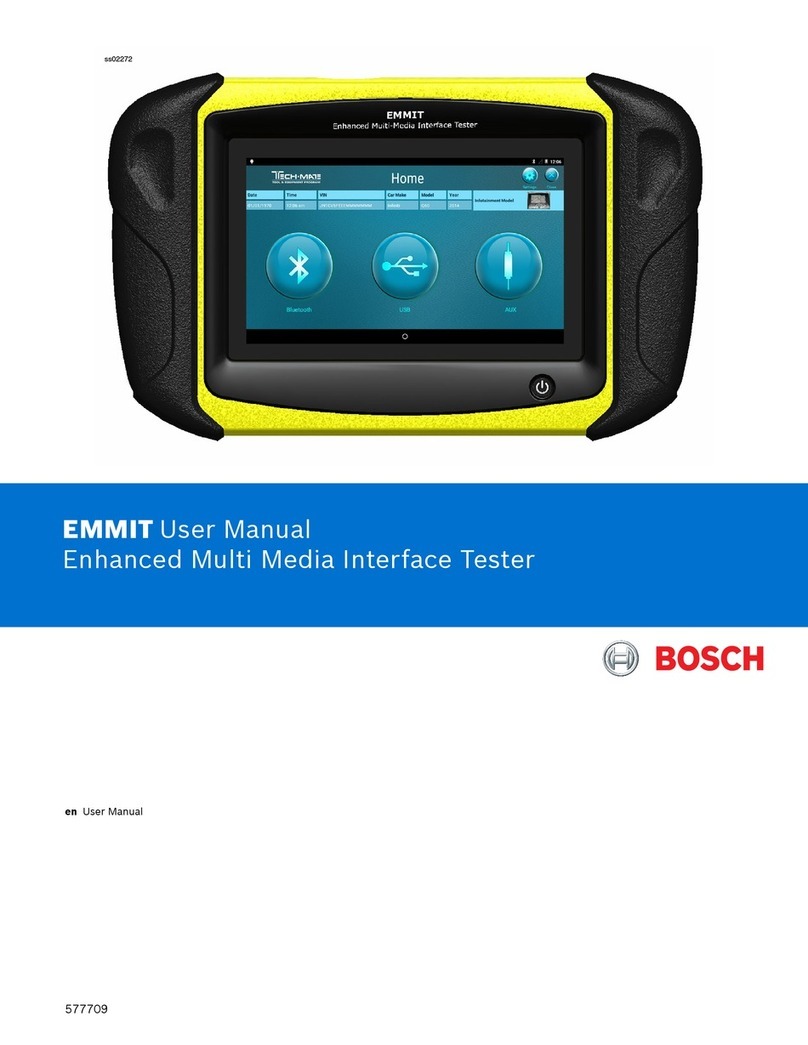
Bosch
Bosch EMMIT User manual

Bosch
Bosch CRS 845 Setup guide
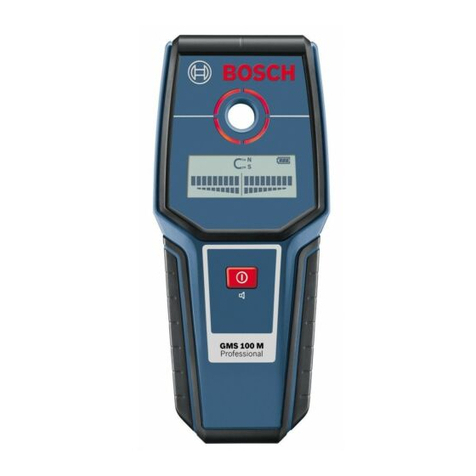
Bosch
Bosch Professional GMS 100 M User manual

Bosch
Bosch BAT 131 User manual

Bosch
Bosch KTS 340 User manual
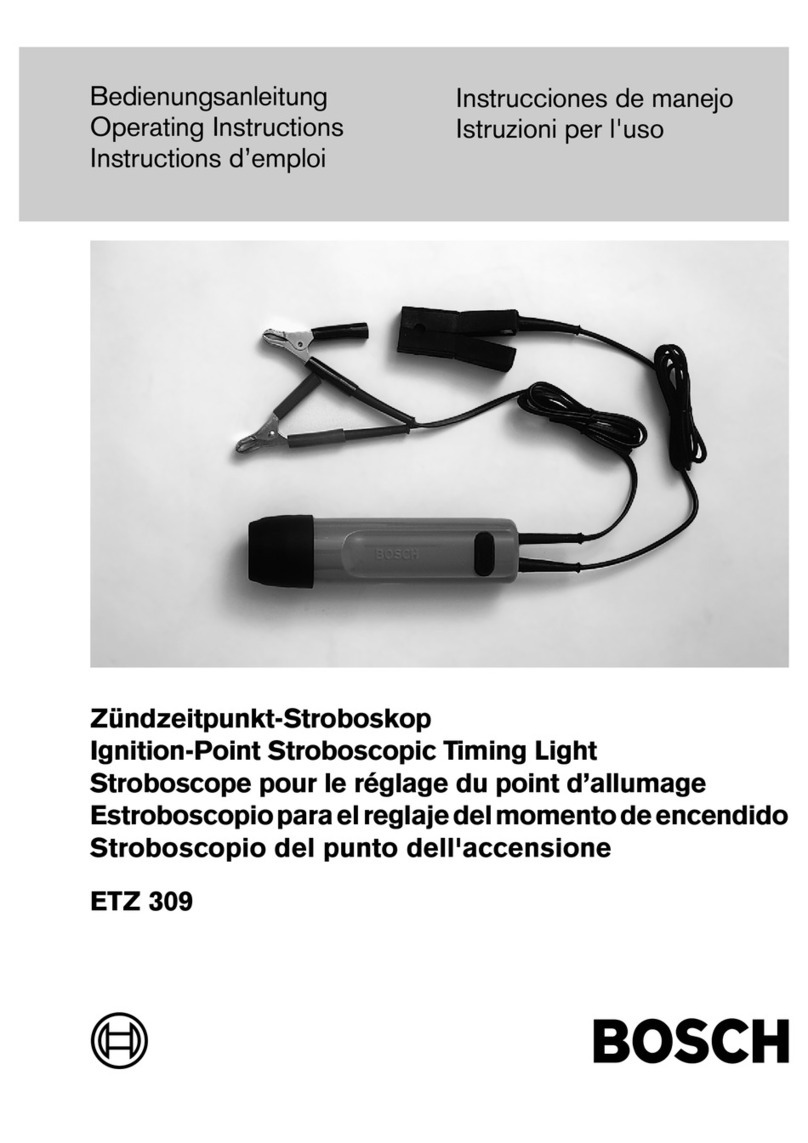
Bosch
Bosch ETZ 309 User manual

Bosch
Bosch BAT 131 User manual

Bosch
Bosch Professional GOS 10,8 V-LI User manual
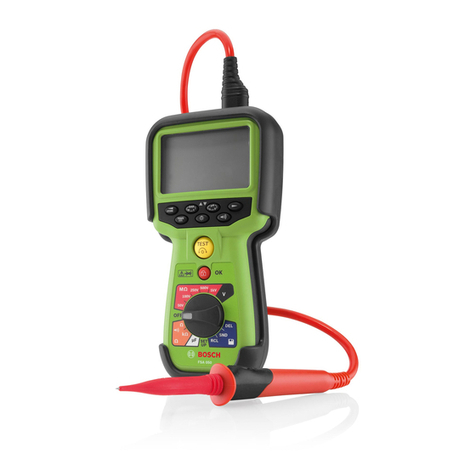
Bosch
Bosch FSA 050 User manual
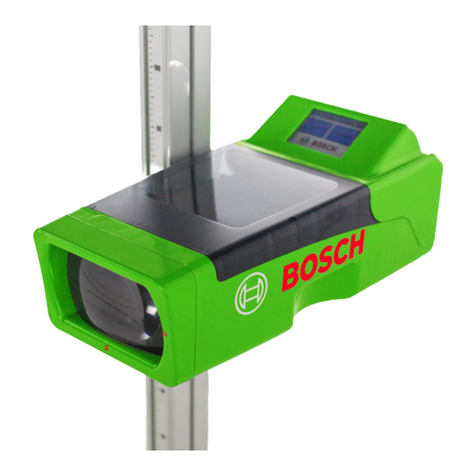
Bosch
Bosch HTD 8 Series User manual
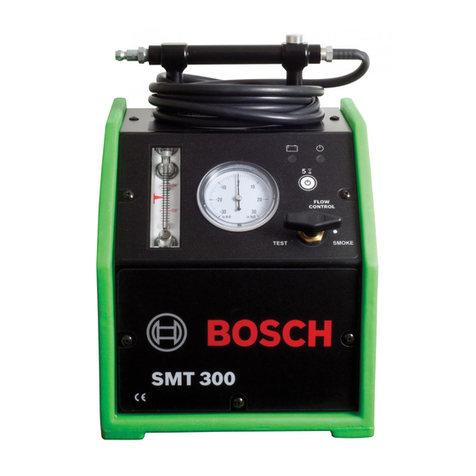
Bosch
Bosch SMT 300 User manual

Bosch
Bosch BAT 125 User manual

Bosch
Bosch CRS 845H User guide
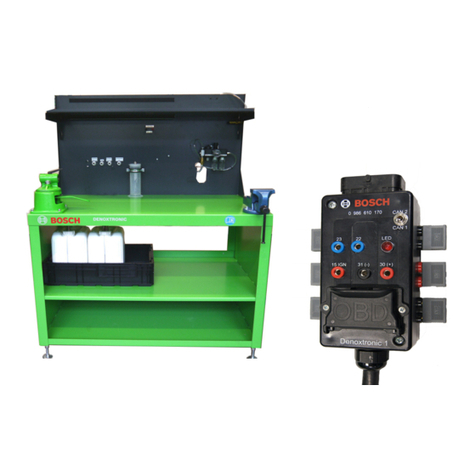
Bosch
Bosch Denoxtronic 1.1 Technical specifications
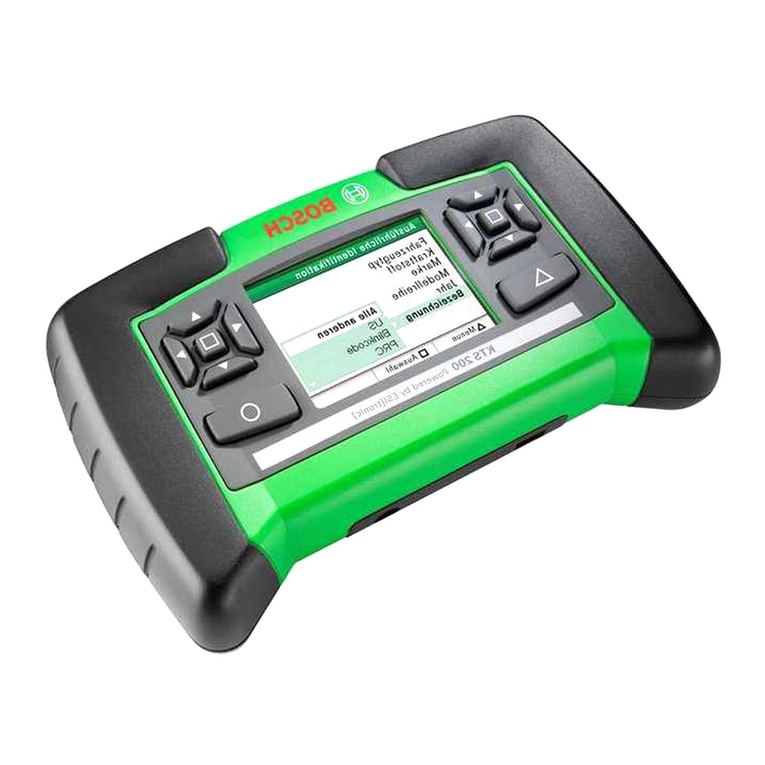
Bosch
Bosch KTS 200 User manual
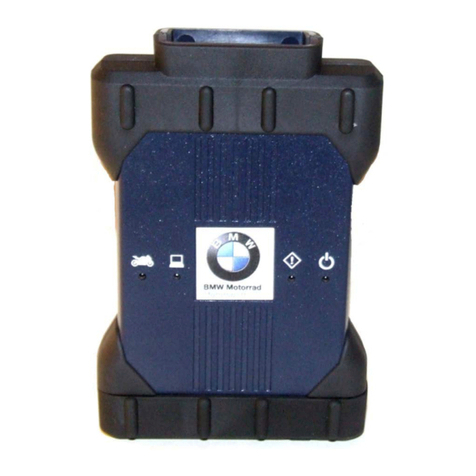
Bosch
Bosch RCK3 VCI User manual
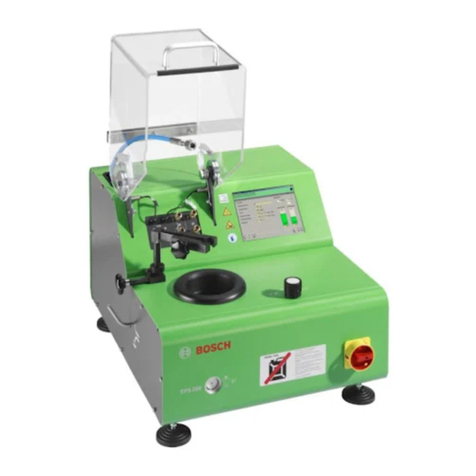
Bosch
Bosch EPS 200 User manual

Bosch
Bosch BEA 950 User manual
